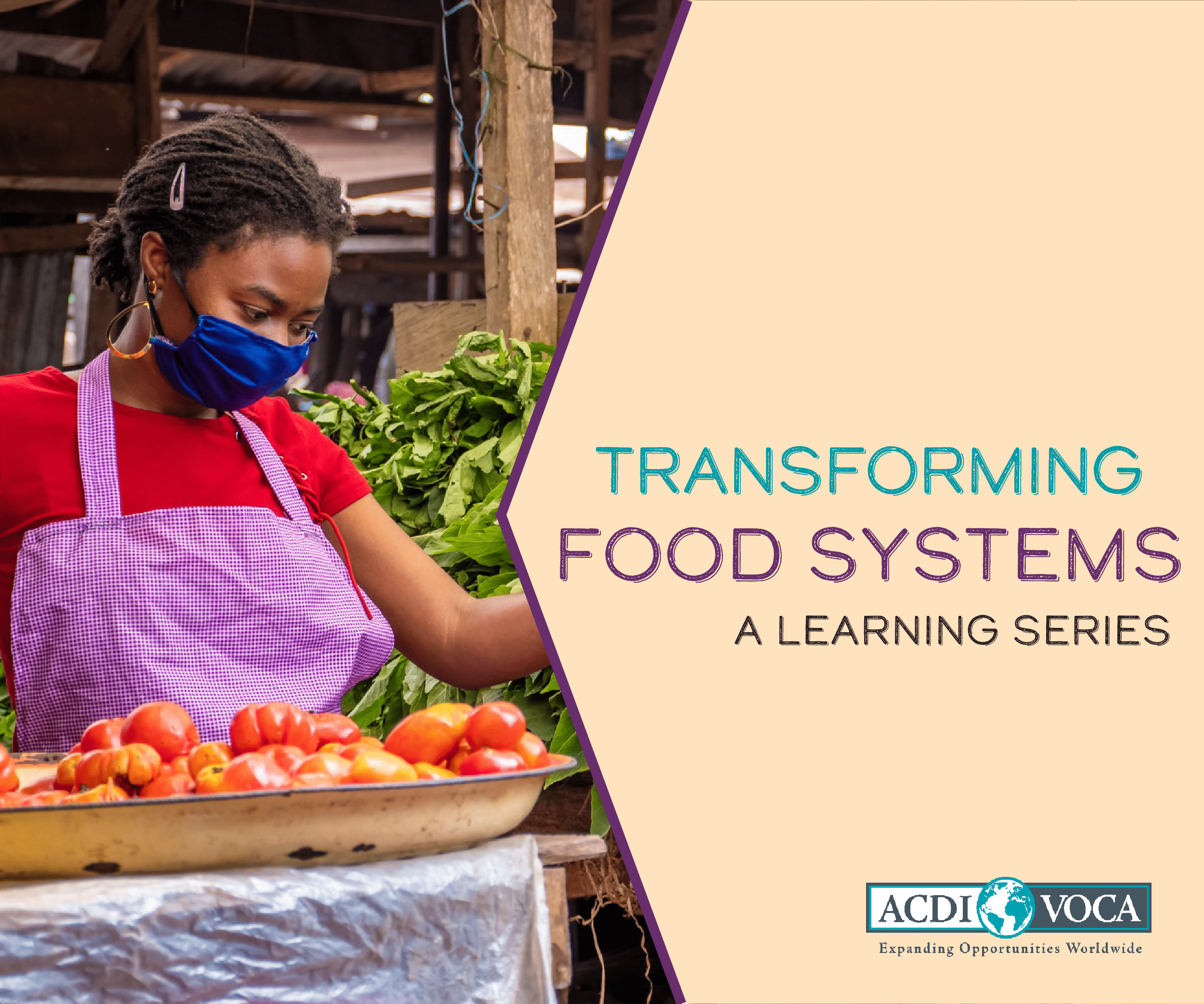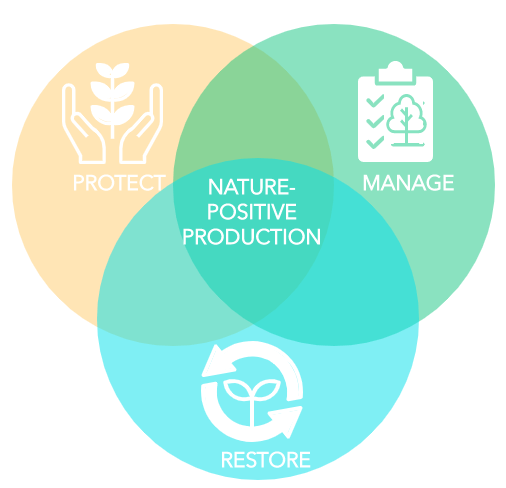
ACTION TRACK #3: BOOST NATURE-POSITIVE PRODUCTION
A VICIOUS CIRCLE
With more than a third of the world’s land surface and 75 percent of freshwater resources now devoted to crop or livestock production, the global food system is the single biggest threat to nature. Plant and animal agriculture has caused massive biodiversity loss, overfishing in much of the oceans, three quarters of the world’s deforestation, and approximately one quarter of all greenhouse gas emissions. In turn, ecosystem degradation compromises our ability to nourish current and future generations, increases resource conflict, and spurs the spread of zoonotic diseases like Ebola, SARS and COVID-19. With the global population expected to exceed 10 billion by 2050, systems need to not only “produce more with less,” but also play a key role in fostering healthy ecosystems.
BOOSTING NATURE-POSITIVE PRODUCTION

Nature-positive food systems involve meeting the demand for nutritious food while managing natural resources in a regenerative way. Biodiversity is a cornerstone of nature-positive food systems because of its capacity to filter water, attract pollinators, control pests, regulate climate, build soil, and store carbon. Nature-positive food systems refer to three interlinked conditions: 1) the protection of natural ecosystems by avoiding their conversion to other uses, and by returning some land and water back to nature; 2) the sustainable management of productive systems to deliver net-positive biodiversity benefits; and 3) the restoration of degraded land by rehabilitating once productive land.
Integrated landscape management (ILM) is broadly defined as a framework for harmonizing policy and practice for multiple land uses (e.g., protected areas, for food, fodder, fuel, fiber) within a given geography. The conservation of natural resources is best done at the landscape scale because the ecosystem services provided by a river or forest, for example, are shared by a multitude of actors across farm boundaries. Landscape-level interventions include climate-smart agriculture (CSA), agroforestry, sustainable grazing management, watershed management, and soil and water conservation.
NATURE-POSITIVE PRODUCTION IN ACDI/VOCA PROJECTS
Protecting forests and biodiversity: In Liberia, the USAID-funded Forest Incomes for Environmental Sustainability (FIFES) Activity helped communities secure the rights, governance structures, viable businesses, and partnerships needed to sustainably manage and benefit from forest resources. This included conserving the biodiversity of 11 community forests, increasing the productivity of forest-product value chains, and developing enterprises to provide income for farmers.
Promoting agroforestry: The USAID-funded Jamaican Rural Economy and Ecosystems Adapting to Climate Change (Ja REEACH) I and II Projects increased climate change resilience and promoted sustainable natural resource management. Ja REEACH improved drought forecasting and introduced agroforestry innovations, including rotational sequential intercropping, windbreaks, spot planning to increase tree cover, and sustainable apiculture.
Championing CSA: In Ghana, the USAID-funded Agricultural Development and Value Chain Enhancement (ADVANCE) II Project maximized productivity and the adoption of environmentally sustainable practices in maize, rice, and soybean value chains. CSA techniques adopted by smallholders included the use of manual tilling techniques to minimize soil disturbance and the promotion of cover crop systems.
Don’t miss the previous two posts in this Food Systems series: “ACDI/VOCA’s Conceptualization of and Approach to Transforming Food Systems,” published 8/25/2021 and “ACDI/VOCA Transforms Food Systems for Nutrition,” published 9/1/2021.






